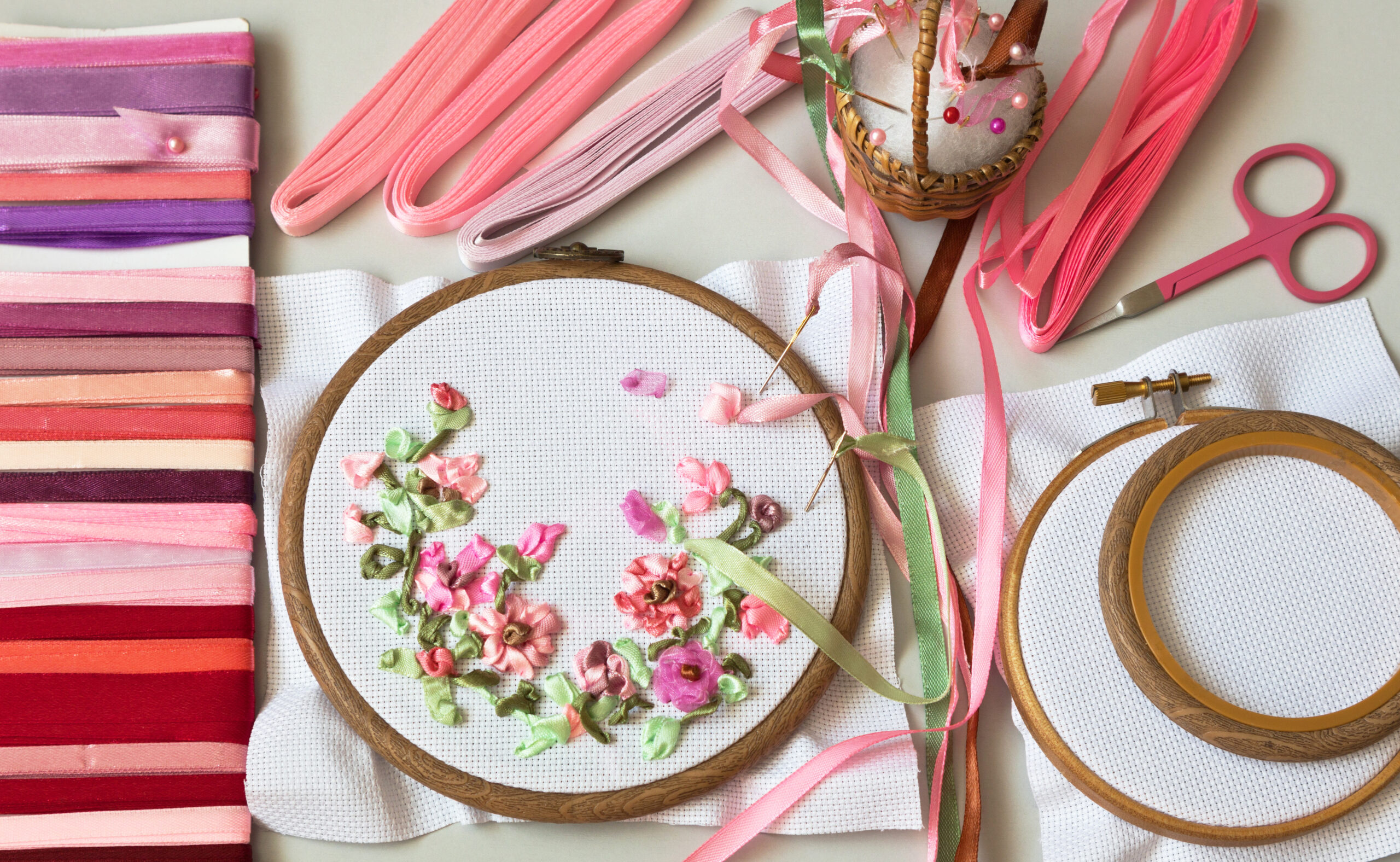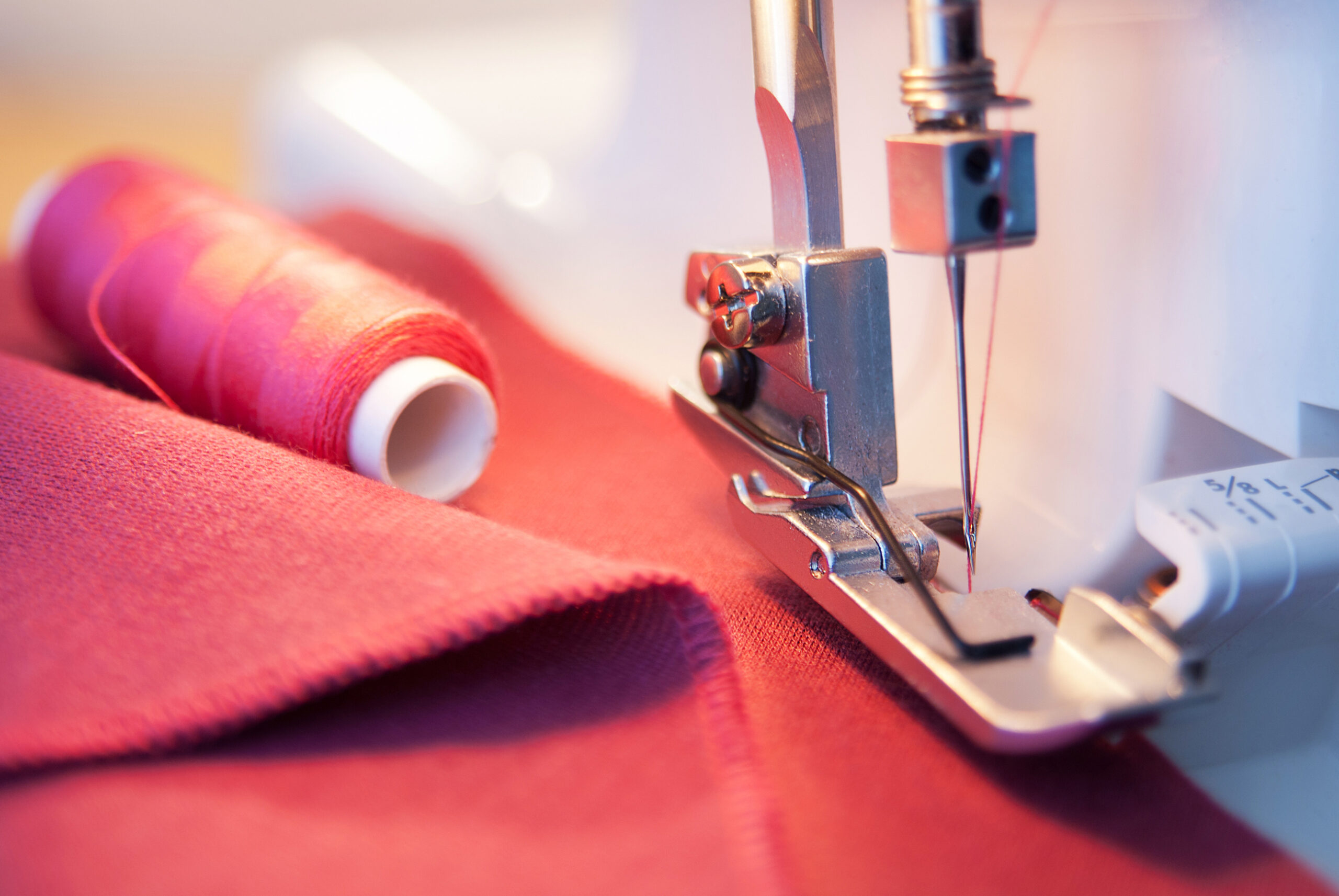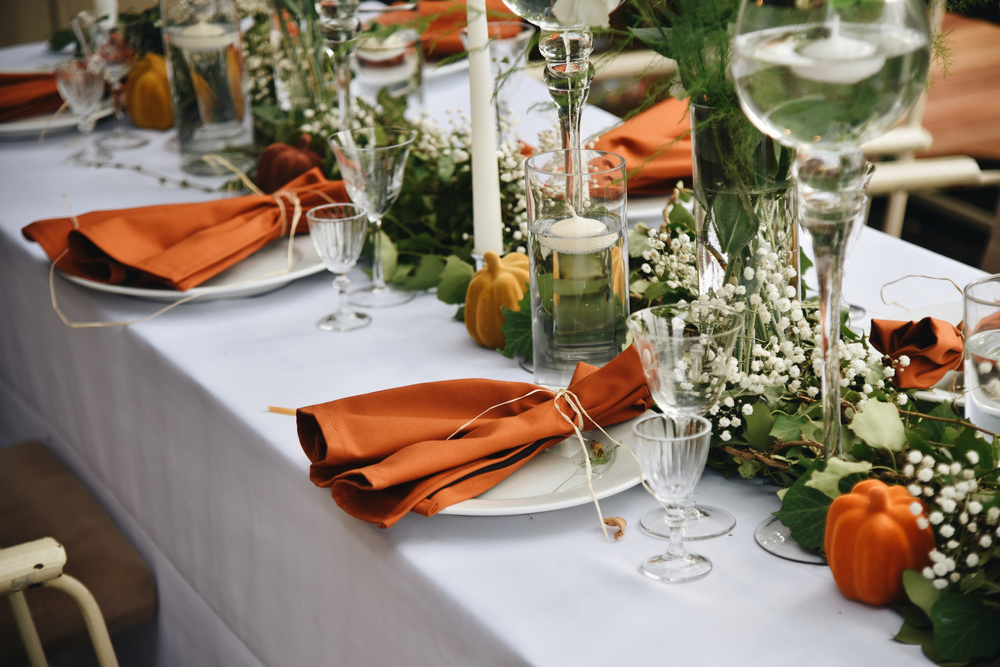Hand embroidery is an art that people have been practicing for hundreds and thousands of years. It’s a type of art form that involves decorating fabrics using needles and threads. You can decorate household objects and clothes yourself if you know how to do it. Hand embroidery may look like a very difficult thing to do, but you’ll be surprised to know that it really isn’t. If you the different types of embroidery stitches, you can make beautiful embroidered pieces easily.
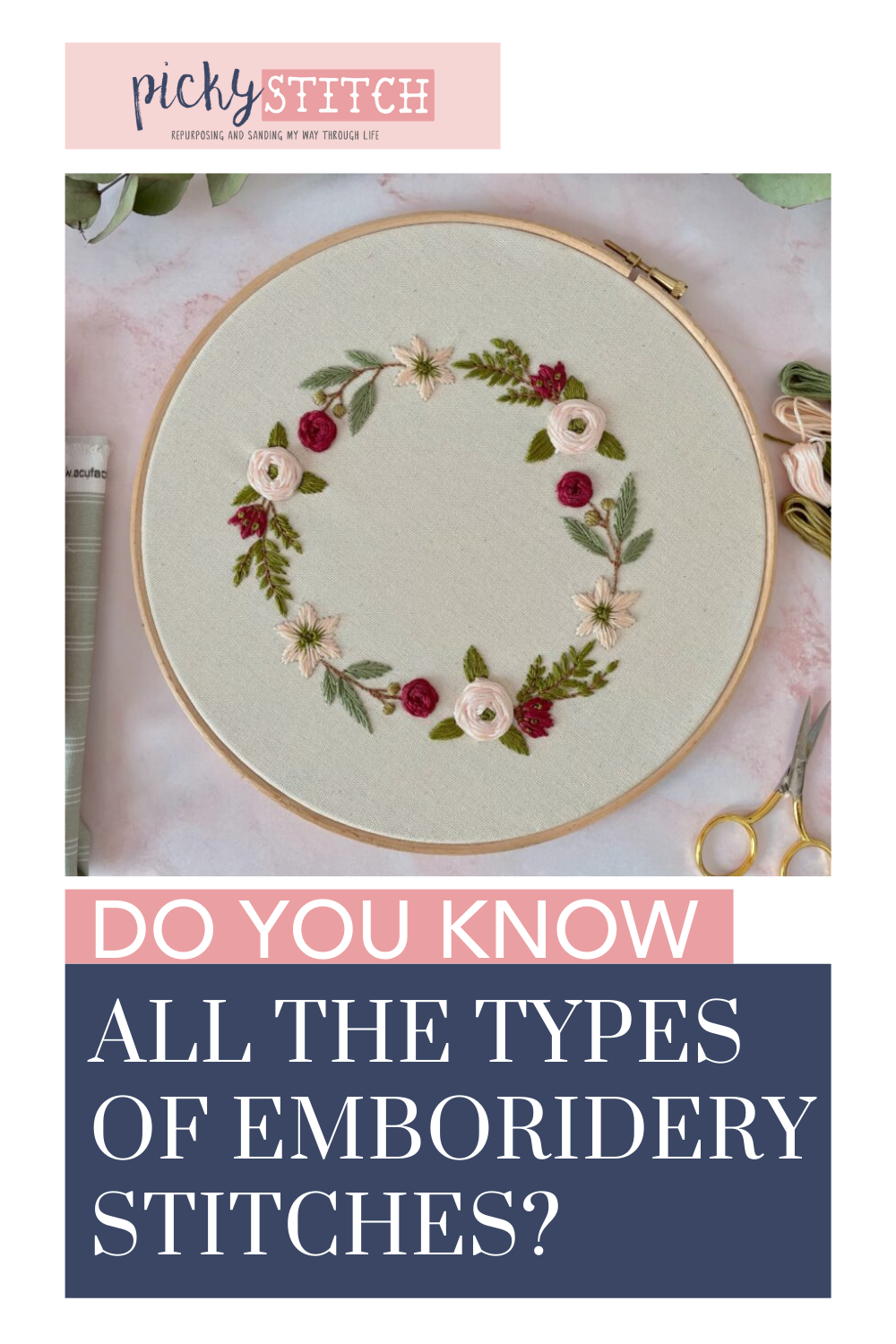
You might wonder, ‘what’s the point of learning something that takes so much time to complete?’ Well, there are plenty of reasons why you should consider learning hand embroidery. It’s a hobby that you can learn and then utilize to make useful and valuable items
. You can make embroidery patterns on your clothes, make beautifully embroidered cushion covers and kitchen curtains. Moreover, following repetitive stitching movements is absolutely soothing that can be good for your mental health.
The best part about learning embroidery is that you can earn from it. Make beautiful embroidered pieces and sell. Handcrafts sell at premium prices.
However, you need to learn various types of embroidery stitches before you can enjoy all the benefits that we’re talking about. Fret not. Learning types of embroidery stitches isn’t difficult. You’ll get the hang of it in no time. We promise!
Knowing Different Types of Embroidery Stitches
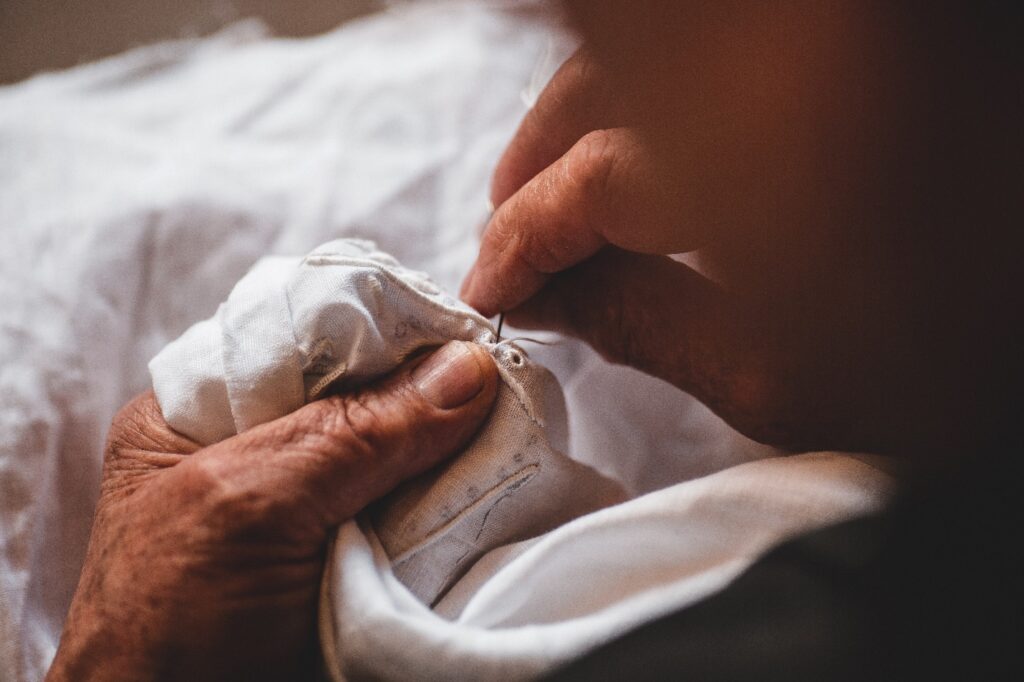
There are numerous types of embroidery stitches. However, you should only focus on learning the basic ones for now. You can move on to learning the difficult ones once you feel you’re getting better.
Let’s have a look at different types of embroidery stitches so that you can get started with one of the most engrossing arts of all time!
Backstitch
The backstitch is one of the first and most basic types of embroidery stitches that you need to learn to get started. And don’t worry; it’ll only take you a few days’ time to learn it. Backstitch is the most used type of embroidery stitch.
It’s useful for absolutely any type of outlining. Not only that, but it goes well with other types of stitches as well. You can learn the more complicated Pekinese stitch once you’ve got your hands stable at this stitch because the backstitch forms the base of a Pekinese stitch.
Straight Stitch
The straight stitch is as simple and straightforward as its name. It’s literally the easiest among all types of embroidery stitch. You simply pass the needle (with the thread, of course) through the fabric and then go back down, making a neat, straight stitch.
A straight stitch is a building block for learning embroidery. A straight stitch may look simple and not-so-creative, but you can create real art using it. You can use this type of stitch to make scattered fills, stars, textures, and a lot more.
You need to practice the stitch placement and length, and then the world of options is open for you.
Running Stitch

A running stitch is the dashed lines you see on embroidered crafts. It’s a very simple stitch that’s used to add details to embroidery. It’s one of the simplest and easiest types of embroidery stitches to learn.
Once you learn this one, you can also learn the Japanese sashiko embroidery that’s based on a running stitch, basically. It’s simple, but it can become more complex – depending on the level of your skill.
You can change the entire look of this stitch by adjusting the spacing and length or adding more rows in between to make the embroidery design look more ‘full.’ A running stitch works really well with wrapping and weaving.
French Knot
The French Knot is one of the prettiest types of embroidery stitch. However, it’s not easy. Even experienced embroiders struggle with making the perfect French Knot. It’ll take you a lot of time to learn this type of embroidery stitch, so be patient.
A French Knot makes an excellent addition to any embroidery pattern, especially where there are a lot of patterns and textures involved. To make this stitch, you need to wrap your needle to form a fabric over the surface of the fabric.
You need to hold the working thread tightly. The trick is to hold it just right.
Chain Stitch
Just like a bold outline on a painting makes the design pop out loudly, a bold outline of an embroidered pattern does pretty much the same job. A chain stitch is what you’ll need here. Chain stitches are types of embroidery stitches that are used to make bold lines.
The stitch involves rows of stitches linked to each other. You should first learn to work in reverse and forward and then move to more difficult types of chain stitches.
Stem Stitch
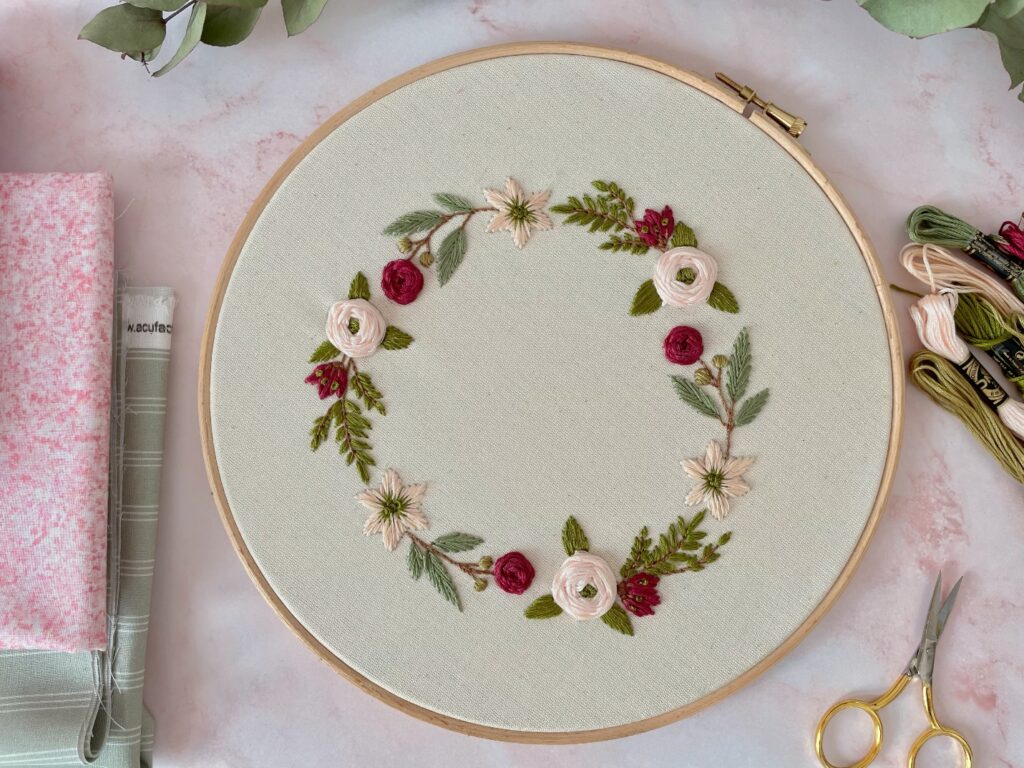
It’s a basic type of stitch that’s used to make simple and neat outlines on embroidery patterns. It’s among the basic types of embroidery stitches that you must learn to get started with embroidery. You can use it to make curves or straight lines.
You can use this stitch anywhere you please – in your embroidery project or for your simple stitching project. If you adjust the width of this stitch, you can use it to fill in embroidery patterns. You just have to stay consistent with the length to make your fill look neat and attractive.
Satin Stitch
A satin stitch is more like a compilation of many straight stitches. A satin stitch is used to fill in spaces on your embroidery design. You’ve got to master the art of consistency in stitch length to make your satin stitch look great. You should move to satin stitches after you’ve become an expert at making perfect straight stitches.
Feather Stitch
The next important stitch on our list of the basic types of embroidery stitches is the feather stitch. It involves creating open lines that appear to be moving. A feather stitch makes great borders and frames.
You can pair a feather stitch with other types of embroidery stitches and embellishments. You can use this stitch to make feathers, seaweed, foliage, and plenty of variations as you please!
Woven Wheel Stitch
The woven weave stitch is a bit complicated. Therefore, it’ll be a while till you can give this embroidery stitch a try. It’s beautiful, and we know how eager you might be to learn to make it. You can get started with woven wheel stitches once you get the hang of other basic types of embroidery stitches.
Simply start with making a star of straight stitches and then work the thread to make a flower. You can use this stitch to make a bunch of colorful flowers on your embroidered crafts.
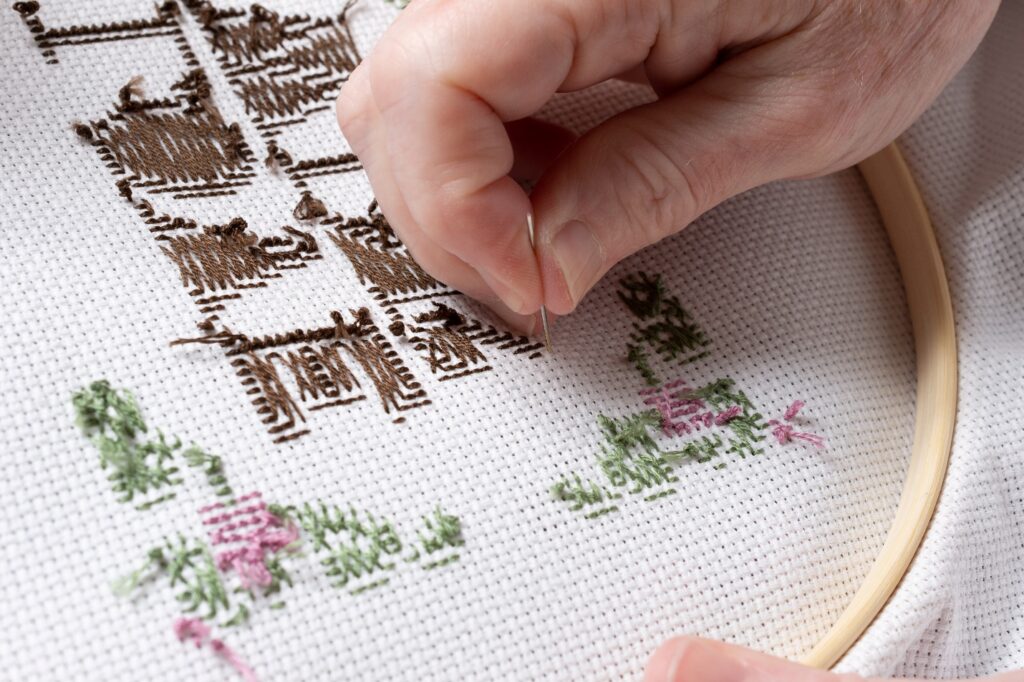
Learning about different types of embroidery stitches is only the first step towards making beautiful embroidery designs. We bet you won’t be able to stop once your hand starts to get stable with making stitches.
The art of hand embroidery is truly engrossing, and you’ll want to learn more and more of it. And why shouldn’t you? It’s an excellent hobby and might even help you make some bucks!

